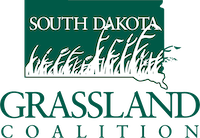It’s no secret that ag inputs can be hard to find and expensive. Fencing supplies are a good example. I visited with Reed Cammack at Cammack Supply at Union Center and Glen Rausch of Onaka who operates a custom fencing business in addition to raising cattle. Rausch has 30+ years of experience in custom fencing.
Cammack and Rausch both say “Plan far ahead!”
Fencing supplies are available but don’t plan on going to town expecting to pick up what you need that day. It could take several weeks to several months to get what you want depending on the product and you might have to call around or drive farther to find a supplier. High demand items like Red Brand low tensile wire might take a while. Cammack’s waited a year to get in a load of that particular wire. Expect to pay 25-30% more than last year. Rausch estimates that materials for a mile of 4 barb wire fence now costs around $8000.
Some items like railroad ties may be permanently difficult to find. According to Cammack the railroads have switched to composite and concrete ties so the US supply is dwindling. They are still available from Canada, but shipping from there has been difficult. A shortage of truckers and high fuel prices compound the problem. Treated posts are available but need to be ordered far in advance. The supply of lodge pole pine has been affected by recent wild fires. According to Rausch, the quality of fencing isn’t what it used to be. “We used to get 50 years out of a barb wire fence, but now they might last 25 years. The price of steel posts has risen sharply but they are available. Part of the issue is that wire is a low profit product so companies that struggle with their own supply issues and labor shortages are not focused on making wire. Prices are up $25 a roll from a year ago.
Because barbed and low tensile wire prices have jumped, high tensile wire is a cheaper option. Rausch is a fan of high tensile wire. It is easier to string and holds up better in rugged terrain and bad weather. High tensile costs about half of an equal amount of barbed wire and its ability to hold cattle is superior. Be sure to purchase 12.5 gauge high tensile wire. “It’s stiffer and harder to work with but much stronger. Fourteen gauge farm supply store wire will be a disappointment”, he said. Deer can easily tear 14 gauge and snow will break it easier too. Demand for fencing is up. Many old West River fences have reached the end of their life span and need replacing. More livestock producers have adopted rotational grazing so Cammack’s have seen an uptick in demand for electric fence and solar chargers. Solar wells are also gaining more widespread use. Pre grounded fiberglass drill stem posts are seeing more use.
Rausch recommends using two wires, one hot and one ground for dividing pastures. Perimeter fences should be three wires alternating between hot and ground. Energizers and solar panels are better and more reliable in terms of performance than they used to be. Supplies are available but slow as much electric fence equipment such as Gallagher is produced in New Zealand. Rausch advocates electric systems instead of barbed wire due to improved performance, reliability and lesser cost. Most animals excluding young calves learn to respect electric fence. “In this day and age producers have to consider it,” he said.
Garnet Perman is a freelance writer and ranches with her husband, Lyle, near Lowry, SD.
Check out our Mentoring Network page and reach out to your preferred mentor to know more about proper fencing.
Source: SDGC Newsletter
